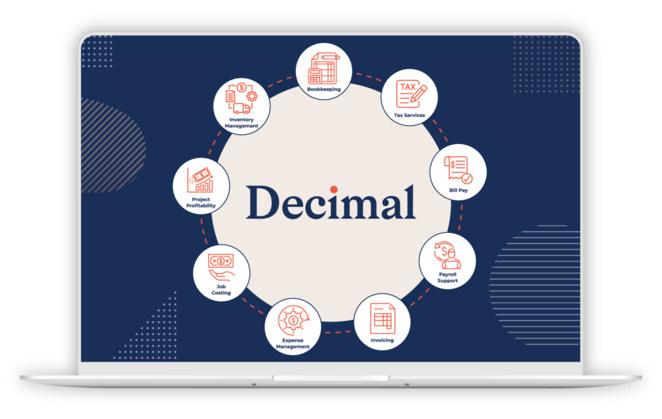Between looming deadlines, constantly shifting tax laws, and somehow even heavier workloads than last year, client experience often ends up at the bottom of the priority list for most accounting firms.
And with many firms actually turning work away, it’s easy to think: Why bother improving our client experience? We’re at capacity anyway.
But here’s the reality: your client experience directly impacts your team’s productivity, sanity, and your bottom line.
If you don’t intentionally design how clients interact with your firm, they’ll do it for you and the way they want to do things often leads to miscommunications, inefficiencies, and chaos.
That’s why auditing your client experience isn’t a luxury. It’s a necessity.
Client experience impacts your firm’s health
I hear a lot of accountants refer to client experience as something that’s just “nice to have.” Wrong. Client experience is a strategic lever that a lot of firms aren’t bothering to pull. Here’s why:
Money is emotional
Clients trust you with their finances, which means any lapse, like an unclear email or a missed follow-up, can trigger anxiety. That stress often gets redirected back to you and your team.
Fewer fire drills
A well-structured experience reduces those panicked, late-night emails and rushed document uploads. Your workflows become smoother, your time more predictable.
Enforced boundaries
A clear client journey allows you to set expectations early and maintain consistent communication protocols, especially valuable during busy seasons.
Room for growth
Streamlined experiences allow you to serve more of your ideal clients while confidently turning away those who don’t fit.
How to audit the client journey
The good news? You don’t need a fancy consulting project to improve client experience. All it takes is a bit of time and a willingness to see things from your client’s point of view.
Walk through your firm like a new client
Begin by stepping into the shoes of a first-time client and walking through the process from their perspective. Ask yourself:
- How easy is it to schedule a consultation or sign up for services?
- What does the onboarding process feel like?
- Is it clear how and where to upload documents?
- Are communications timely and understandable?
Pay close attention to points of confusion, slowdowns, or ambiguity. Write down every friction point you hit. Anywhere you feel confused or unsure, your clients definitely do too. These are the areas ripe for improvement.
Evaluate communication channels
Next, examine how your firm communicates:
- Are email requests consistent and clearly written?
- Do clients have to jump between tools (email, text, shared drives) to interact with you?
- Is it easy for them to find and access past communications?
A disjointed system makes it harder for both clients and staff to stay on track.
Assess your use of technology
Technology can either simplify or complicate. Make sure yours is simplifying.
If your firm uses a client portal, make sure it’s fully integrated into your workflows. Don’t treat it as a nice-to-have add-on. The portal should be the single destination for:
- Document uploads and downloads
- Secure messaging
- E-signatures
- Invoice payments
When used consistently, a good portal acts like a digital front desk. It shows clients exactly how to work with you, and it reinforces boundaries without having to repeat yourself.
Set clear expectations and reinforce them
Once your client journey is smoothed out, train your team to enforce the process. During onboarding, make it crystal clear how clients should communicate, submit documents, and reach out for help.
Be prepared to gently steer clients back on course if they stray. You’re not being inflexible; you’re protecting your team’s time and ensuring a better experience for everyone.
And yes, some clients may resist. That’s okay. Not every client is a fit, and establishing clear boundaries can help you identify those misalignments earlier, not later.
Long-term payoff for your clients and your team
If your journey is clear, your team should be trained to stick to it. That means:
- Reminding clients how and where to communicate
- Pointing them back to the portal instead of replying over text
- Politely declining to chase down missing docs unless it’s urgent
Some clients will resist structure. That’s okay. Boundaries are how you protect your team’s time and identify which clients truly fit your firm.
Improving your client experience isn’t just about making things easier for clients.
When you reduce confusion, set clear boundaries, and create a predictable system, everyone benefits:
- Clients feel more supported and informed
- Your team operates with less stress and more focus
- You get time back to focus on strategic growth and ideal clients
Taking even one hour to walk through and audit your client journey can reveal small changes with big returns. And the sooner you start, the faster your firm can run smoother, more profitably, and with a lot less chaos.
Sponsored Content: This article is generously brought to you by one of our valued sponsors. Their support enables us to continue delivering expert insights and the latest industry trends to our dedicated community of accounting professionals.
.png?width=150&height=63&name=TWRlogo-regmark_blueblack%20(1).png)
.png)










Do you have questions about this article? Email us and let us know > info@woodard.com
Comments: